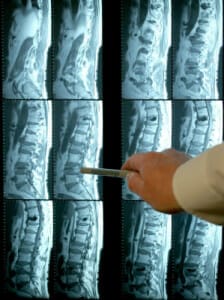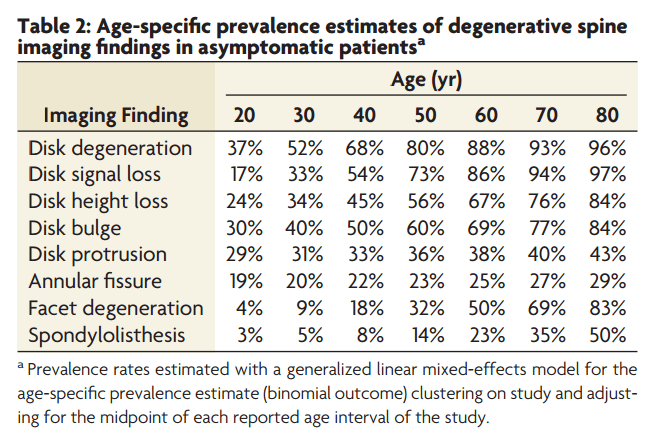
Low back pain affects about two-thirds of the population at some point in their lives and often means significant time away from what you love doing (and work!), which is not ideal. As well as this, backs are being investigated by advanced imaging much more. Mainly because:
1. As I have said, back pain is so common
2. It means significant time off work and sport, meaning a large cost to the economy
3. And ultimately, imaging is becoming a lot easier to access and cheaper to do
This ultimately means advanced imaging such as MRI and CT scans are being used more and more.
There scans commonly pick up:
- Disk degeneration
- Facet joint hypertrophy
- Bone spurs
- Disc protrusion and more

Far too often (really way too much) these results and findings are taken as THE CAUSE of your back pain, often triggering costly and long medical and surgical interventions. Which don’t always leave you int he condition you would hope for.
So really how much faith can you put in the scan results and how can we make the most of this ever-improving and readily accessible technology? Because it really is great that these investigations are becoming much more accessible – although we have a way to go – because ultimately it does mean better outcomes for you.
Now, here is why we can’t just look at your scan result and say “There is your problem, fetch me the scalpal”without taking your entire clinical presentation into account:
This table shows the results of imaging findings of over 3000 pain-free individuals – Yes they had these findings and are all asymptomatic, meaning showing no symptoms whatsoever.
Find your age bracket on the table to the left and look down the column and see the prevalence of spondylosis in your peers.
For example:
- 37% of 20-something year olds have disk degeneration
- 60% of 50 year olds have disk bulges
- 50% of 60 year olds have facet joint degeneration (1)
Sobering reading huh? The thing to keep in mind is that the people in this study are asymptomatic – SO findings of spondylosis in scans does not automatically mean that they should be causing you pain.
So what does this mean for your scan results, should you throw them out the window?
NO. WAY.
This is where health professionals need to utilize this great technology and use them as part of their tool belt to our your advantage.
Take away message: Image findings of spondylosis among other things MUST be taken in the context of the patients clinical condition, otherwise you are wasting your time.

- Your pain pattern and presentation (night pain, morning stiffness etc)
- Physical test findings
- Subjective findings (what you tell us – which is why it is so important that you tell your health pro how it feels and when it hurts etc)
- Past medical history
And use their clinical reasoning to say “does this scan finding reflect what the patient is presenting with” – That is what a good physio, doctor, specialist etc will do, although all of them should.
2nd take-home message: Unless any red flags are present, low back pain should always have a period of conservative treatment before invasive medical treatment is needed – for most back pain, this will be enough. See this great post to get started on some rehab exercises.
Looking for more? We have compiled all the best info in one, evidence based rehab guide
Feel free to leave a comment, like and share to your heart’s content

